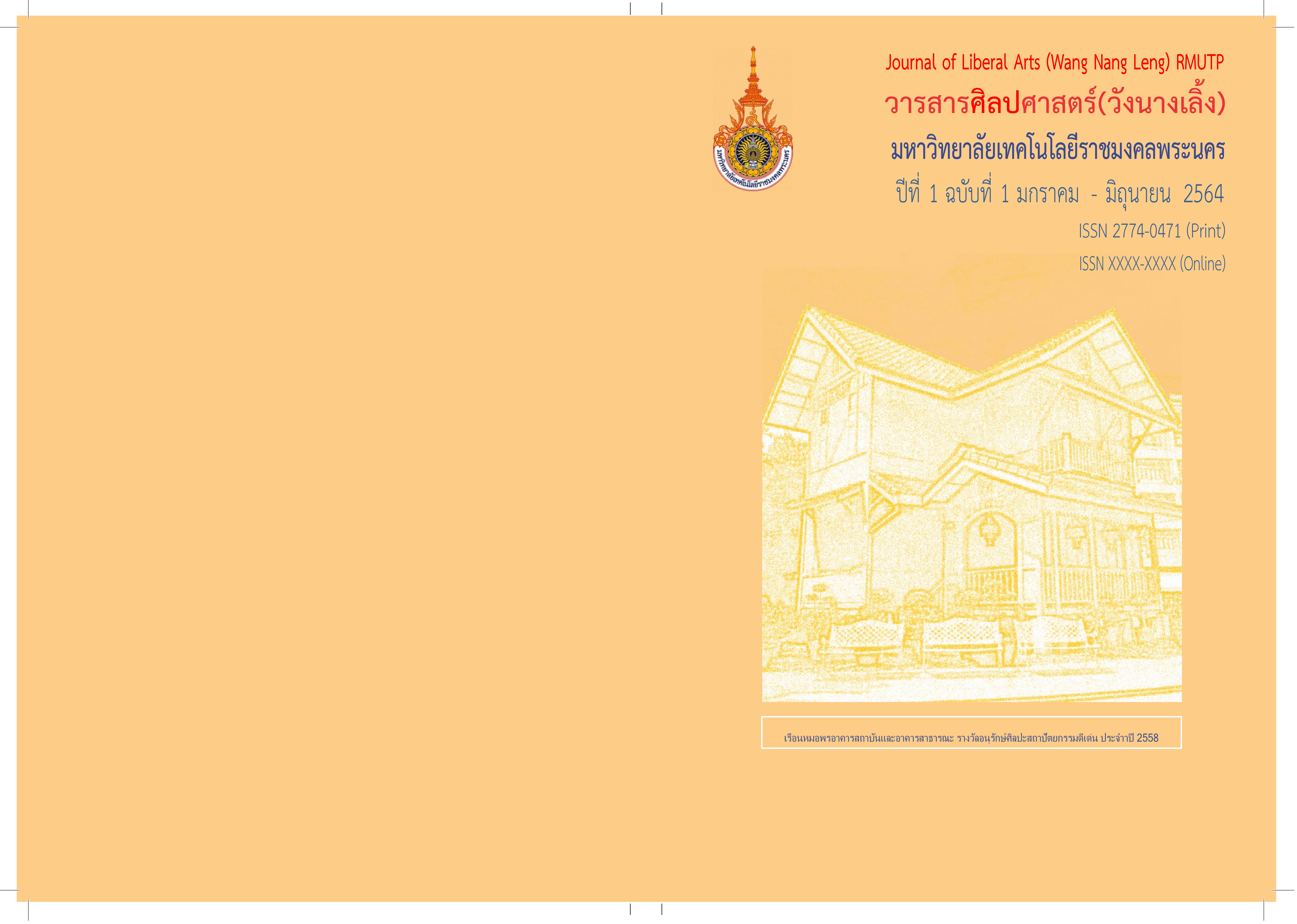Creative Tourism: An Innovative Shift of Cultural Tourism
Keywords:
Cultural tourism, Creative tourism, Developing and promoting tourism, Local creative experts, Authentic cultureAbstract
Cultural tourism has been growing due to an expansion of cultural tourists. Not only are upper and middle class tourists interested in cultural tourism, but lower class tourists are also interested in cultural tourism. However, regarding cultural tourism in these days, tourists are not interested in seeing and learning things as passive tourists; they want to actively participate in creative activities to verify their creative potential. They want to live everyday life with community people. This is an opportunity for places without structural capital, but possess cultural capital to leverage cultural resources to lure tourists to come to their places. Cultural capital includes everydayness of living, traditions and customs, handicrafts, performance, cookery, games, sports, and other activities. To develop a place to be a destination for creative tourism requires an integrated task force consisting of the public sector to set policies and support the development and promotion of tourism, the private sectors to invest in the creative industry, local creative
experts to teach and lead creative activities. They must regard creative tourism as heritage tourism to sustain the community authentic culture.
References
Al-Ababneh. (2017). Creative. Tourisms Journal of Tourism and Hospitality, 6(6), 282.
Chang Seohee. (2018). Experience economy in the hospitality and tourism context. Tourism Management Perspectives, 27(July 2018), 83-90.
Femandes and Rachao. (2014). Reinventing tourism at a traditional cultural tourism destination: A case study of Viana do Castelo (Portugal).
International Journal of Business and Globalization, 12(3), 281-296.
Hui Yu Lin. (2019). The Transmission of Traditional Cuisines: A Review research, Journal of Tourism & Hospitality 8(2).
Jagdish N. Sheth. Z. (1991). Why We Buy What We Buy: A Theory of Consumption Values. Journal of Business Research,22(2), 159-170.
Kithiia and Reilly. (2016). Real or Stage? Authenticity and Cultural portrayal in Indigenous Tourism. Journal of Tourism & Hospitality, 5(5), 213.
Lori J. Sipe. (2018). Connect, Refresh, and Energize: Enabling Organizational Innovation Capacities Through Self-Determination Theory, SAGE Journals, 20(2), 241-253.
Moon Kwong. (2017). An ultra structural study of the application of dentine adhesives to acid- conditioned sclerotic dentin October 2000,
Journal of Dentistry. 28(7), 515-28
Richards, J.A. (1999). Remote Sensing Digital Image Analysis: An Introduction. Springer-Verlag, Berlin, Germany
Richards, J.A. (2000). Racial Diversity, Business Strategy, and Firm Performance: A Resource-Based View. Academy of Management Journal, 43(2), 164-177.
Richards, G. (2000). World Culture and Heritage and Tourism. Tourism Recreation Research, 25(1), 9-18.
Richards, G., & Raymond, C. (2002). Creative Tourism. ATLAS News, 23, 16-20
Richards and Wilson. (2004). Developing Creativity in Tourist Experiences: A Solution to The Serial. Reproduction of Culture? Publisher: Elsevier.
Richards, G. (2010). Creative Tourism A Global Conversation how to provide unique creative experiences for travelers worldwide: at present at the 2008 Santa Fe & UNESCO International Conference on Creative Tourism in Santa Fe. In Wurzburger, R. (Ed.), Creative Tourism and
Local Development. 78-90.
Richards, G. (2019). Creative tourism: opportunities for smaller places? June 2017 Tourism & Management studies, 15(SI).
Downloads
Published
How to Cite
Issue
Section
License
วารสารศิลปศาสตร์ (วังนางเลิ้ง) มหาวิทยาลัยเทคโนโลยีราชมงคลพระนคร อยู่ภายใต้การอนุญาตของคณะศิลปศาสตร์ มหาวิทยาลัยเทคโนโลยีราชมงคลพระนคร เว้นแต่จะได้รับอนุญาติเป็นอย่างอื่น





